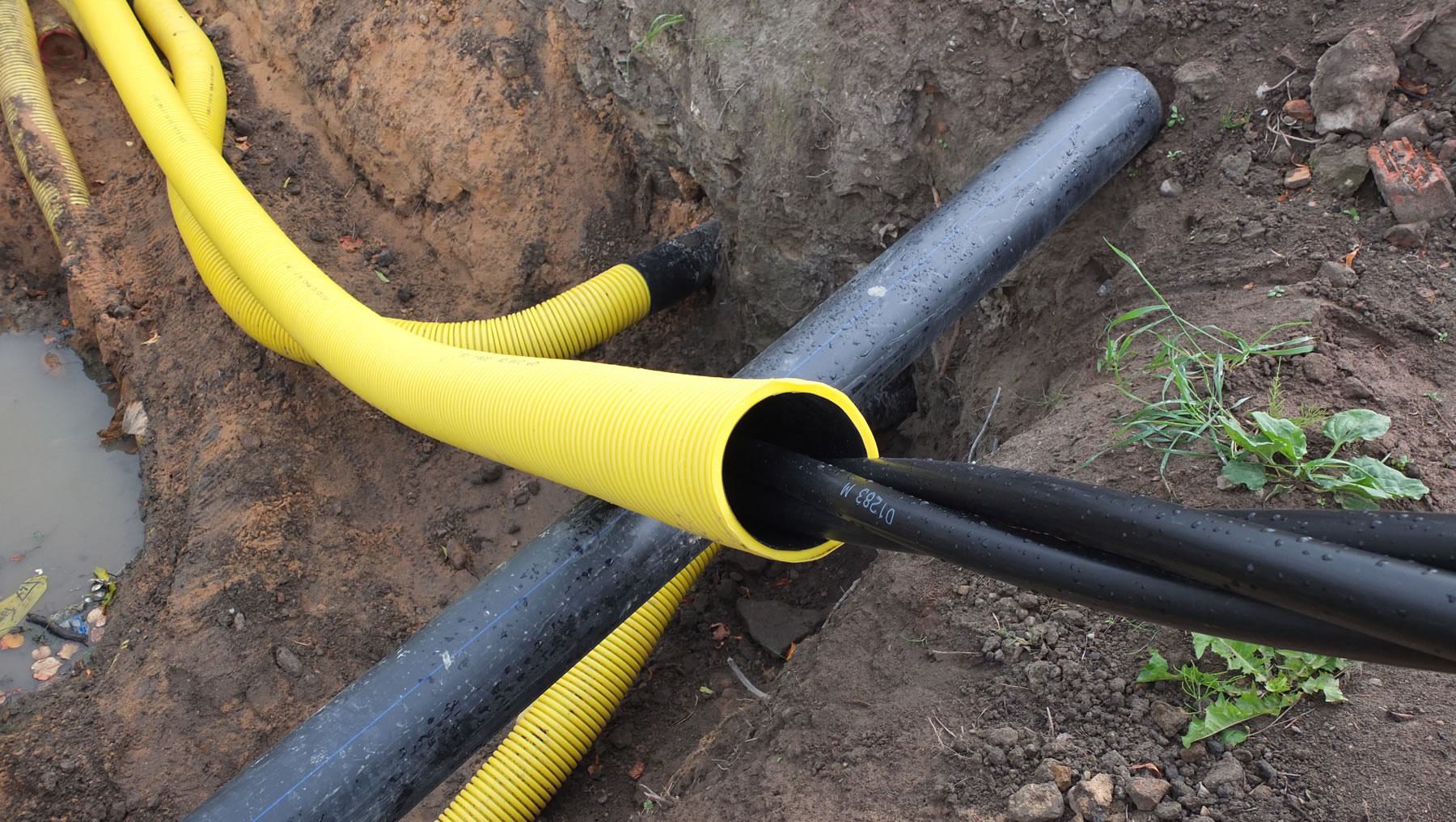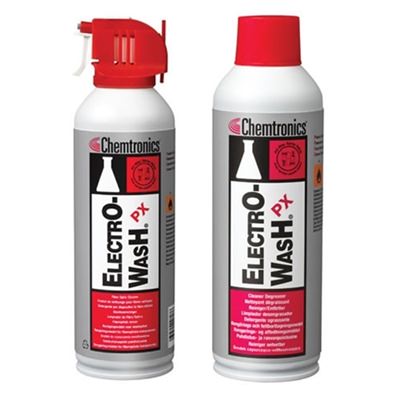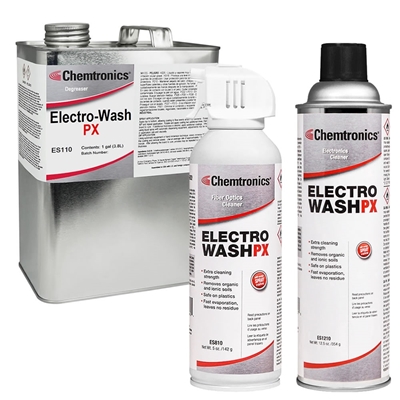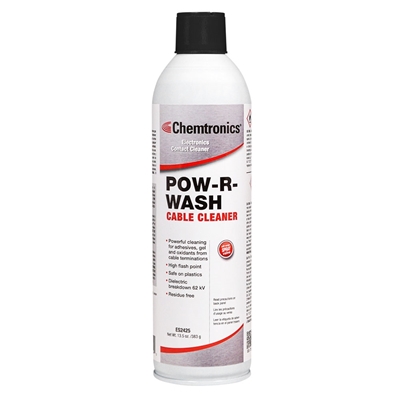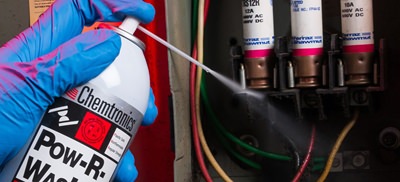Running cable can be a messy business, so cleaning is an important consideration for both high voltage and communication cable installations. When the failure point can be in a wall, underground, or hundreds of feet underwater, a high quality installation is particularly important. What follows are frequently asked questions about cable cleaning and Chemtronics products that are engineered for that type of application.
Note: This article applies to traditional copper cabling. For fiber optic connector cleaning, see our article “How To Clean and How Not to Clean Fiber Optic Connectors”.
What kinds of cables will require cleaning?
There are two basic types of cables, and each type has many variations and derivatives.
High voltage cables transmit electrical energy and are primarily used for power transmission. Communication cables carry lower voltage electrical energy that is then converted into electrical signals for data transmission and telecommunications. These are also known as Category III, IV, V and VI cables. Communication cables can be either copper or optical fiber and are used to transmit signals from point A to point B.
Why is it necessary to clean these two types of cables?
Cleaning trans-America, trans-oceanic and trans-metro cables is important to insure their reliable operation. Contaminants on the surface of high voltage cables can create an artificial path to ground at the point of contamination, which can cause the cable to “blow out”. High voltage cables can carry up to 1,000,000 kV, though they usually operate at 500,000 to 750,000 kV. The typical residential transformer connection commonly runs at 25,000 kV.
Category III, IV, V or VI data cables are not as sensitive to contaminating soils during operation, but they must be cleaned during maintenance and repair operations. Any connection made with dirty splices or connectors will cause a decrease in signal strength. Optical fiber end faces and connections require cleaning because any soil on the face of the glass core will cause signal reflectance, which can result in signal loss or distortion. Glass fiber cables must also be cleaned prior to fusion splicing or connectorization. These cables can be cleaned using a dry wipe and Electro-Wash MX, part number ES1621.
What do the terms “polar” and “non-polar” mean?
The kind of contamination found on cables comes in two basic types. Water or alcohols readily dissolve polar soils, such as sugar from soft drinks, or salt from human sweat. Non-polar soils (such as oils, grease, mineral oil, buffer gel, etc.) will not dissolve in water or alcohol, but are readily dissolved by non-polar solvents like naphtha and other hydrocarbons. Since both types of soils are found on cables, the best cleaner will combine both polar and non-polar solvents.
What are Electro-Wash MX and Pow-R-Wash Cable Cleaner?
Electro-Wash MX is a new cleaning chemistry from Chemtronics® that has many cable cleaning applications. MX is a great cleaner for low voltage cables and for all aspects of fiber optic cable cleaning. Electro-Wash MX also has a faster evaporation than Pow-R-Wash Cable Cleaner.
Pow-R-Wash Cable Cleaner is especially designed for cleaning high voltage cables. Pow-R-Wash Cable Cleaner has high dielectric strength, which makes it perfect for high voltage cleaning applications. Pow-R-Wash Cable Cleaner has a slower evaporation rate than Electro-Wash MX, which works better for dissolving heavy contamination associated with buried high voltage cables.
How are Electro-Wash MX and Power-Wash Cable Cleaner packaged and how are they used?
Electro-Wash MX, part number ES1621, is packaged as a 10 oz. net weight aerosol spray, and as presaturated wipes that are individually wrapped or dispensed from a pop-up tub. MX will remove both polar and non-polar soils as well as the various types of exclusion gels, pulling lubricants and adhesives used in the construction and installation of telecom cable assemblies.
Pow-R-Wash Cable Cleaner, part number ES2425, is packaged in a 13.5 oz. aerosol can. Using ES2425 is as simple as spraying onto a lint-free wipe, which is then used to wipe away tar, oil, grease and adhesives from cables, tools and equipment.
Where are Electro-Wash MX and Pow-R-Wash Cable Cleaner used?
Any network that supplies power, telephone, and CATV services to existing buildings will have to be cut and spliced to supply these same services to any new buildings erected within the network area. All network cables must be cleaned prior to any splices being made to provide services to the new building. Each cable that is cut must be free of outside surface contamination as well as the debris generated by cutting through the many layers of shielding and insulation adhesive wrapping each cable. To achieve the long-term 20 to 30 year reliability expected from such splices, the bonded surfaces must be extremely clean and dry, and free of any contaminants that would compromise the integrity of the splice.
Why is it particularly important to insure a clean splice in a high voltage cable?
Ground water, oil from digging machinery, dust, dirt, or residues from solvents that did not dry completely are all sources of contamination that can compromise a high voltage cable splice. Any contamination left on the shielding or insulation can create a “track to ground” for the high energy, causing a catastrophic power loss. To prevent this the splice must be free of all contaminating residues and completely dry of all moisture and residual solvents.
What are other applications for Electro-Wash MX?
Electro-Wash MX is a universal cleaner with many applications. Apart from its uses in cable cleaning, Electro-Wash MX aerosol and pre-saturated wipes can be used as an ink and marker stain remover. MX removes adhesives from printing stencils and flux buildup for reflow ovens. MX is also a very effective metal cleaner and a solvent source for computer, electrical switching and fiber optic field service applications. Electro-Wash MX pre-saturated wipes can also be shipped by air, for those technicians that travel to perform factory service on equipment.
How does Electro-Wash MX compare to Electro-Wash PX in fiber optic cleaning applications?
The main difference in performance of these two products in fiber optic cleaning applications is the slower evaporation of the Electro-Wash MX. This becomes an advantage when it is necessary to remove heavy residue deposits, as the slower evaporating cleaner has more time to dissolve the contamination. The MX wipe delivers better service for businesses assembling kits for field service technicians. The MX aerosol appeals to outside plant and OEM service personnel, who like its slower evaporation rate.
For more information, contact a Chemtronics application specialist at 800-645-5244 or [email protected].

